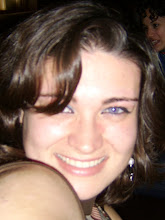http://www.guardian.co.uk/science/2008/apr/27/genetics.cancer
What DNA can tell us
Genes alone cannot account for what a person is, but even the slightest distinguishing traits between people can be attributed to individual genes. James Randerson reports
Genetics is rarely all or nothing. In almost every case your version of a gene will give you an increased or a lowered chance of a particular outcome (like becoming obese) but that outcome is not certain. Your other genes and environmental influences, such as how much you eat and exercise, all work together to determine how you end up.
Sex
The simplest thing DNA can tell you is whether someone is male or female. Apart from some very rare cases, that doesn't even involve looking at their DNA sequence - all you need to know is whether they have X and Y chromosomes (making them male) or a pair of Xs (which makes them female). A foetus will, by default, develop as female unless the SRY gene on the Y chromosome is turned on.
Hair colour
Many redheads have a different version of a gene that prevents pigment-producing cells called melanocytes responding to a hormone that instructs them to make dark pigment. A DNA sample from someone carrying two of the mutated genes has a 96% probability of being naturally red-haired. A DNA test developed by the Forensic Science Service can identify eight common mutations of this gene that have the same effect of stopping it from working.
Eye colour
At least four genes work together to determine your eye colour. By analysing these genes scientists can classify someone into one of three eye-colour groups - light (blue and grey), dark (black and brown), or hazel - with 97% certainty.
Attention deficit hyperactivity disorder (ADHD)
This condition has been linked with a genetic stutter in the gene DAT1 which is involved in nerve impulses.
Body clock
The Per2 gene has been linked with "advanced sleep phase syndrome" (wanting to go to bed early and rise in the small hours). Another gene, Per3, is found more often in night owls.
Long life
Particular versions of the Klotho gene are associated with longevity in humans. It seems to influence age-related conditions such as heart disease and stroke.
Thrill seeking
Certain versions of a gene on the X chromosome that codes for the monoamine oxidase enzyme (MAO), are associated with the sensation-seeking and impulsive tendencies.
Obesity
Around half of the UK population carry a variant of the FTO gene, which makes them on average 1.6kg heavier than those who do not have it. Some 16% of the population carry two copies of the gene and are, on average, 3kg heavier. People with the FTO variant also have an increased risk of diabetes.
How DNA can solve crimes
Matching a DNA sample (say from a blood or semen stain) from a crime scene to the perpetrator relies on regions of DNA in between genes that have lots of variability. The technique involves snipping up the DNA using enzymes called restriction endonucleases, which cut the DNA only when they come across a specific sequence. If everyone's DNA were the same then the pieces left after this frenzy of molecular slicing would all be the same length. But there are repeated sections of DNA that vary considerably between individuals. That means the lengths of my cut fragments are unlikely to be the same as your cut fragments (because we have a different number of repeats).
By combining several of these variable locations in the genome, scientists can say with very high confidence that a match between a DNA profile found at a crime scene and the profile of a suspect are not the same simply by chance. The probability of two unrelated people having the same profile coincidentally depends on how many variable DNA regions you use, but it is typically one in several billion.
Subscribe to:
Post Comments (Atom)




No comments:
Post a Comment